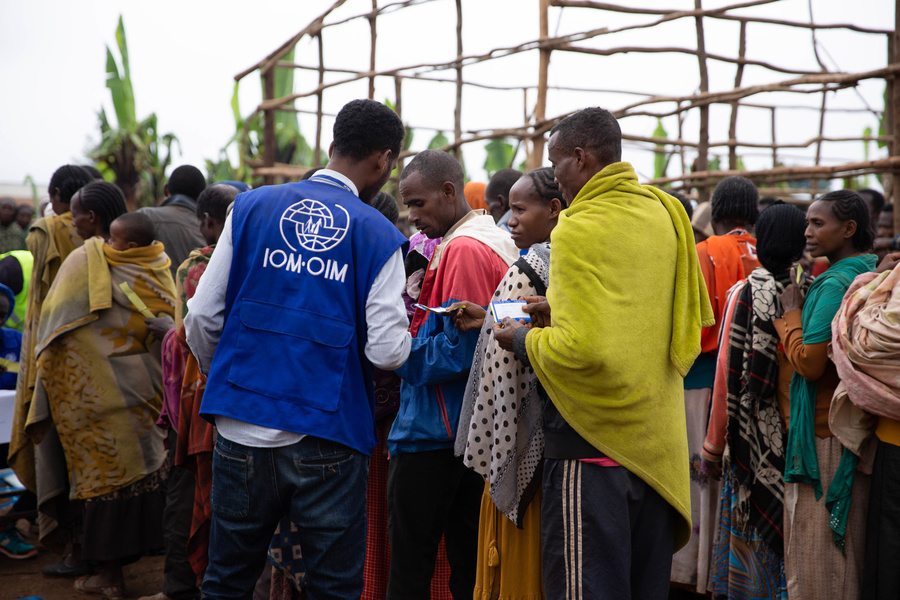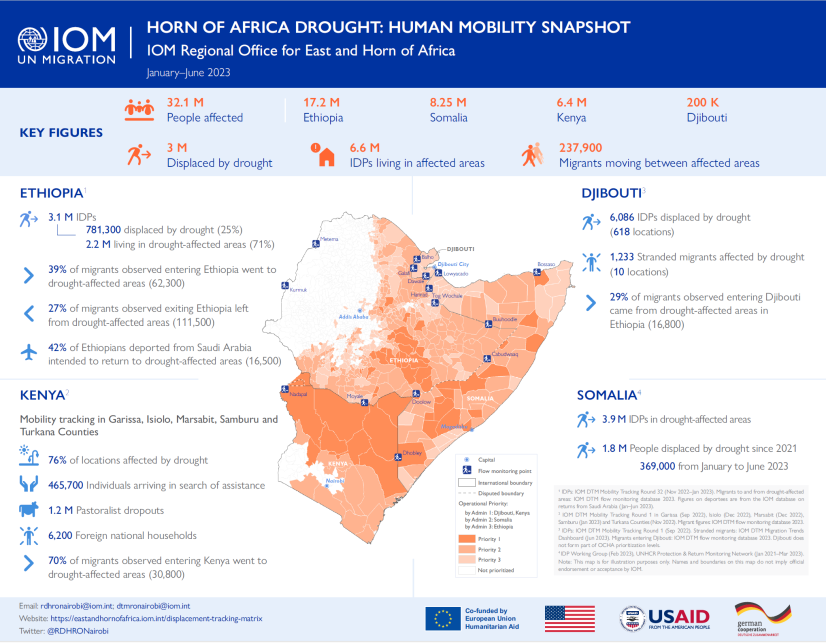
Countries have implemented policy responses and actions to the ongoing food insecurity crisis.

Emergencies
Violence and conflict, weather extremes and climate variability, economic shocks, and animal and plant pests and diseases are key drivers of acute food insecurity, according to the World Food Programme (WFP) and Food and Agricultural Organisation (FAO). According to the Integrated Food Security Phase Classification (IPC), which is a common global scale for classifying the severity and magnitude of food insecurity and malnutrition, acute food insecurity is classified as „food insecurity found at a specific point in time and of a severity that threatens lives or livelihoods, or both, regardless of the causes, context or duration.“ (IPC, 2021).
There are 20 food insecurity hotspost countries according to the WFP AND FAO outlook (2023). Hotspots are identified areas requiring urgent action to protect livelihoods and lives due to a combination of how food insecurity drivers (including conflict, climate change and disease) are predicted to evolve and deteriorate in the near future (ibid). Food insecurity drivers are also interlinked with human mobility and displacement.
According to WFP and FAO, the top ten food insecurity hotspots in 2023 include:
- Nigeria (24.8 million people projected to be in acute food insecurity in 2023)
- Democratic Republic of the Congo (24.5 million people projected to be in acute food insecurity in 2023)
- Ethiopia (20.1 million people projected to be in acute food insecurity in 2023)
- Sudan (19.1 million people projected to be in acute food insecurity in 2023)
- Yemen (16.9 million people projected to be in acute food insecurity in 2023)
- Afghanistan (15.3 million people projected to be in acute food insecurity in 2023)
- Myanmar (15.2 million people projected to be in acute food insecurity in 2023)
- the Syrian Arab Republic (12.1 million people projected to be in acute food insecurity in 2023)
- Pakistan (8.6 million people projected to be in acute food insecurity in 2023)
- South Sudan (7.8 million people projected to be in acute food insecurity in 2023)
Find more projected food insecurity hotspots for 2023 here.
Humanitarian Needs
In 2022, 258 million people in 58 countries and territories were in crisis or faced worse acute food insecurity (Global Network Against Food Crises, 2023). The Horn of Africa is currently suffering the longest drought in four decades which will affect at least 31.9 million people (OCHA, 2023). More than 23.5million people endure high levels of acute food insecurity due to droughts in Ethiopia, Kenya and Somalia (ibid).
Droughts are exacerbating vulnerability and hampering resilience. As of June 2023, IOM’s Displacement Tracking Matrix estimates that 3 million people were displaced by drought in the Horn of Africa, and 6.6 million internally displaced persons (IDPs) were living in drought-affected areas, and approximately 238,000 migrants were moving to and from such areas (IOM, 2023).
The World Food Programme warns that millions of people in Somalia might face famine within months (UN, 2022B). More than half a million people in Ethiopia, South Sudan, Yemen and Madagascar already face catastrophic or famine conditions. In other countries and regions, price increases of up to 30 percent for staple foods threaten people in countries across Africa and the Middle East, including Cameroon, Libya, Somalia, Sudan and Yemen (IBID). As of 18 May 2022, Global Humanitarian Response Plans are just 8 per cent funded (UN, 2022A).
Migrants can be disproportionately affected by crises such as environmental disasters or conflict due to factors such as a language barrier, isolation or a lack of social networks, mobility restrictions or immigration status. Such factors reduce their capacity to access support or protection, and increase their vulnerability (MICIC, 2016). Nevertheless, migrants are rarely included in humanitarian response plants.
Lebanon, a country faced with multiple crises, hosts approximately 1.5 million Syrian refugees, the second-largest Syrian population outside of Syria. In 2020, 90 per cent of Syrians in Lebanon were living in extreme poverty, and half of the Syrian population in Lebanon were food insecure (UNHCR, UNICEF AND WFP, 2020).
People on the move are also likely to face even greater difficulties due to a lack of access to food, such as on remote routes and those at sea, but also due to the often-irregular nature of their stay in transit countries. While data on people in transit is scarce, IOM's Missing Migrants Project has documented the deaths and disappearances of 59,205 people within the process of international migration since 2014, as of 12 October 2023 (MISSING MIGRANTS, 2023).
Policy Responses in the Context of Food Security
In 2021, around 193 million people in 53 countries or territories experienced acute food insecurity at crisis or worse levels (FAO, 2022). The war in Ukraine, which started in February 2022, has further aggravated the global food crisis, with Ukraine being one of the top agricultural exporters worldwide.
To mitigate the effects on global food markets, governmental stakeholders have stepped up their food security efforts.
- In June 2022 during the G7 Leaders’ Summit in Germany, the USA pledged USD 2.76 billion in additional aid to address the global food security crisis in response to the war in Ukraine and its corresponding impact on global food markets, expanding the total investment by the US in global food security assistance to USD 5.56 billion since 24 February (USAID, 2022).
- On 21 June 2022, the European Commission adopted a proposal to mobilise EUR 600 million from the reserves of the European Development Fund to support African, Caribbean and Pacific (ACP) countries to cope with the current situation, including through humanitarian assistance, food production and resilience of food systems and macro-economic support (EUROPEAN COMMISSION, 2022).
- On 23 June 2022, the government of Canada announced USD 250 million to help address the global food security crisis with a focus in Sub-Saharan Africa (GOVERNMENT OF CANADA, 2022).
- On 24 June 2022, the UK pledged GBP 372 million for countries affected by increased food and fertilizer prices (UK GOVERNMENT, 2022).
- On 28 June 2022, the G7 leaders announced that they will contribute over USD 4.5 billion to address global food security to support food security efforts in over 47 countries and regional organizations and to support regional plans to address increasing needs of vulnerable populations (THE WHITE HOUSE, 2022).
- On 22 July 2022, Russian and Ukrainian officials signed the BLACK SEA GRAIN INITIATIVE, an agreement negotiated by Türkiye and the UN to allow grain exports to leave Black Sea Ports in Ukraine. This agreement was terminated by the Russian Federation on 17 July 2023. Updates from the Joint Coordination Centre can be found here.
- On 3 August 2023, the government of the United States announced USD 362 million in additional assistance through USAID for countries facing severe food insecurity among the Russian Federation’s withdrawal from the Black Sea Grain Initiative (USAID, 2023).
Disclaimer: This webpage curates public information and data. The opinions expressed in this webpage are those of the authors and do not necessarily reflect the views of the International Organization for Migration (IOM), nor its Member States and other stakeholders. The designations employed and the presentation of material throughout the webpage do not imply expression of any opinion or endorsement whatsoever on the part of IOM, its Member States and other stakeholders concerning the legal status of any country, territory, city or area, or of its authorities, or concerning its frontiers or boundaries. While the portal section "Food security" has been made possible with funding from the German Federal Foreign Office and the Federal Department of Foreign Affairs (FDFA) Switzerland, the contents on this section do not necessarily reflect their official policy or position.

